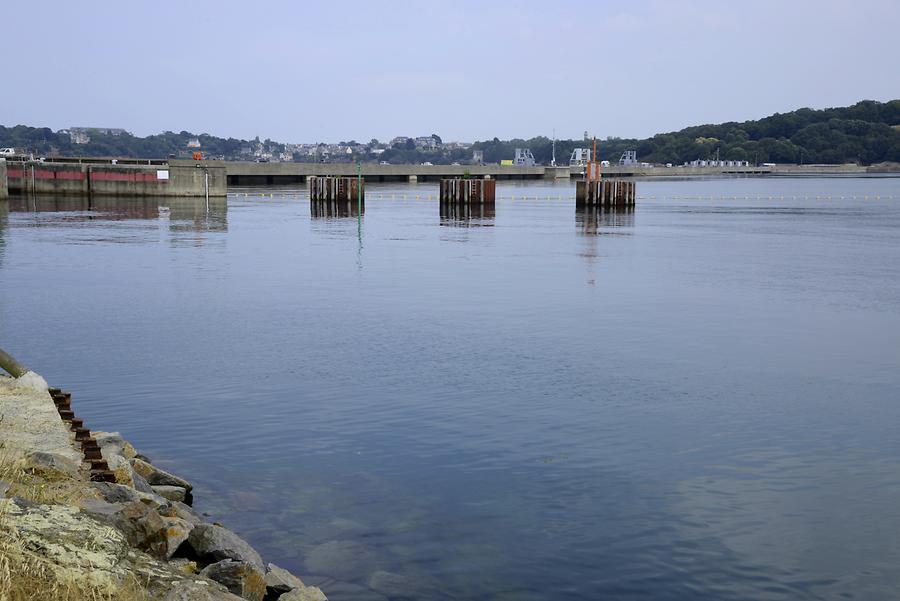St Malo - Tidal Power Plant#

St Malo - Tidal Power Plant, August 2014, © Gerhard Huber, under CC BY-NC 4.0 +Edu
The strong current at tide change is transformed into energy by tidal power plants. They operate according to the principle of a dam, where the bay is dammed up by a dyke. Turbines are fit in this dike to use the water flowing in and out at high tide and low tide to generate electricity. This concept was technically implemented for the first time in 1961 in a bay near St Malo. The plant makes 240 MW. This still makes it No. 2 on the list of the world's largest tidal power stations, just behind the number-one from South Korea. However, for the future mega projects are planned chiefly in China and the UK, which are to reach twenty times the output.
Die starke Strömung zwischen Ebbe und Flut verwandeln Gezeitenkraftwerke in Energie. Sie funktionieren nach dem Staudamm-Prinzip, wobei die Bucht durch einen Deich abgedämmt wird. Im Deich sind Turbinen platziert, die das bei Flut und Ebbe ein- und ausfließende Wasser zur Erzeugung von elektrischen Strom nutzen. Weltweit erstmals hat man dieses Prinzip 1961 in einer Bucht bei St. Malo technisch umgesetzt. Die Anlage leistet 240 MW. Damit liegt sie immer noch auf Platz 2 der weltweit größten Gezeitenkraftwerke, knapp hinter dem Spitzenreiter aus Südkorea. Allerdings sind in Zukunft vor allem in China und Großbritannien Megaprojekte geplant, die die zwanzigfache Leistung erreichen sollen.